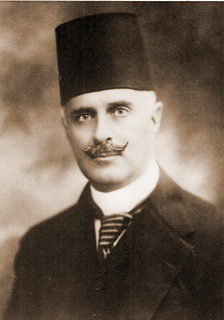Honored Leaders
Omar Toussoun

Biography:
Omar, son of Muhammad, son of Said Pasha, son of Muhammad Ali Pasha, was born in Alexandria on 8 September 1872. He travelled to Switzerland and continued his education there; then travelled across Europe before returning to Egypt. Toussoun was a nomad explorer; he travelled to most of Egypt’s ulterior regions. He was interested in researching Alexander the Great’s tomb, and had research papers on the Monasteries of Wadi El-Natrun and the Western Desert. In his writings, he tracked Alexander the Great’s trip to Siwa and Temple of Amun. He studied the ancient history of Alexandria, Alexander the Great’s tomb, Pompey's Pillar, Siwa Oasis, the Egyptian Desert, and Alexandria’s forts.
Omar Toussoun conducted several researches, excavations, restorations, and documentations of several archaeological sites. He was the first to salvage antiquities from the Egyptian seas; he was told by Captain Cull, a British pilot, in 1933, that he sighted during his flight over Abu Qir Bay archaeological remnants underwater. Accordingly Toussoun managed to salvage a statue of Alexander the Great’s head, and offered it to the Graeco–Roman Museum in Alexandria. He also found the remains of a town, he named Menouthis, and the Temple of Isis. In 1940, under his supervision, divers found the second and main part of a rare antiquity, made of basalt, which was part of a naos dating back to the reign of Pharaoh Nectanebo I. He occupied several important positions, such as Honorary President of the Archeological Society of Alexandria; and the first Honorary President of the Coptic Archeological Society. His archaeological findings resulted in several reports about his archaeological activity, which were published in the periodicals of the Archeological Society, the Egyptian Geographical Society, and French Institute for Oriental Archaeology (IFAO)